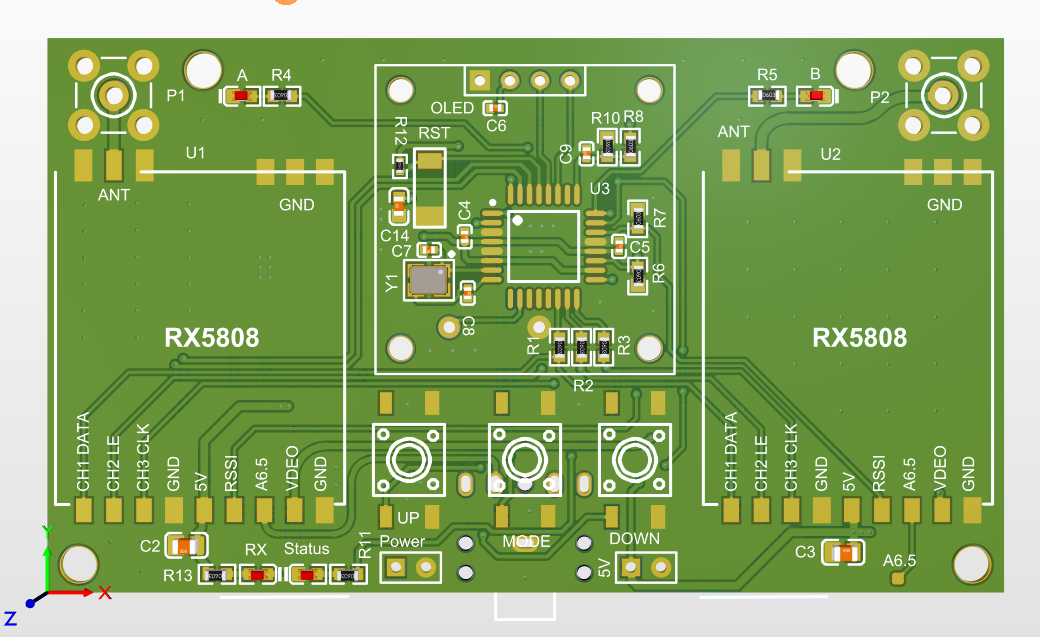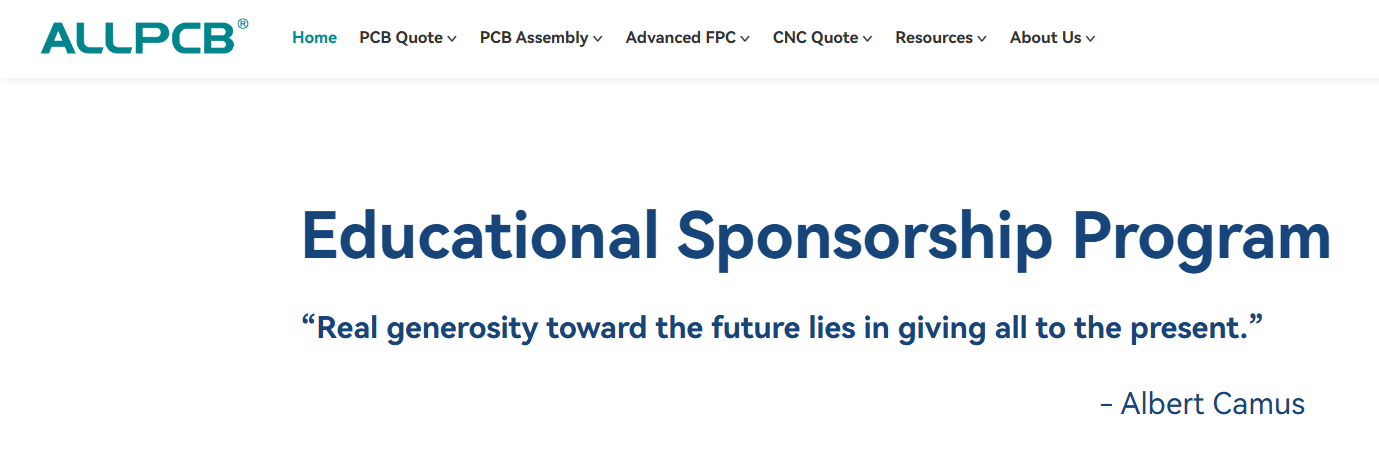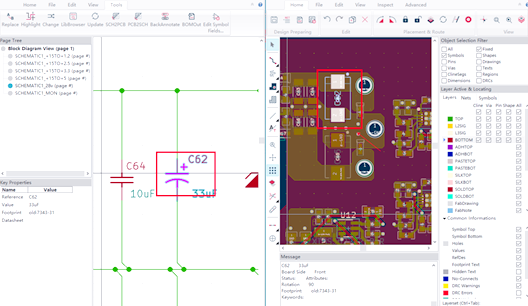Are you a student or educator looking for the best resources to dive into PCB design? Whether you're searching for the best PCB design software for students, free PCB design tools, or affordable PCB software for education, this guide has you covered. We’ll explore a variety of options, including online PCB design platforms and provide a detailed PCB design software comparison for students. Let’s get started with the essential tools and software that can help you master PCB design on a budget.
Why PCB Design Matters in Education
Printed Circuit Board (PCB) design is a critical skill for students studying electronics, electrical engineering, or related fields. It bridges the gap between theoretical concepts and real-world applications, allowing students to create functional circuits for projects like robotics, IoT devices, or simple gadgets. Learning PCB design early equips students with practical skills for future careers in technology and innovation.
However, access to the right tools can be a challenge due to budget constraints in educational settings. That’s why finding free or affordable software is essential for students and educators. In this post, we’ll break down the most accessible and effective tools to help you design PCBs without breaking the bank.
Key Features to Look for in PCB Design Software for Students
Before diving into specific tools, it’s important to understand what makes a PCB design software suitable for educational purposes. Here are the key features to consider when choosing software:
- Ease of Use: A simple, intuitive interface is crucial for beginners who may not have prior experience with complex design tools.
- Cost: Free or low-cost options are ideal for students and educational institutions with limited budgets.
- Community Support: Access to tutorials, forums, and user communities can help students troubleshoot issues and learn faster.
- Compatibility: Software should work on common operating systems like Windows, macOS, or Linux, and support low-spec hardware often found in schools.
- Basic to Advanced Features: Tools should offer schematic capture, layout design, and simulation capabilities to support a range of learning levels.
With these criteria in mind, let’s explore some of the best options available for students and educators.
Top Free PCB Design Tools for Students
For students just starting out, free tools are a fantastic way to learn PCB design without any financial commitment. Here are some of the best free PCB design tools widely used in educational settings.
1. Open-Source PCB Design Software
One of the most popular categories of free tools is open-source software. These programs are often maintained by a community of developers and offer powerful features without any cost. They are ideal for students because they’re freely available and often come with extensive online resources like tutorials and forums.
For example, an open-source tool might allow you to design a simple two-layer PCB with a board size of up to 100mm x 80mm, which is sufficient for most student projects. You can create schematics with components like resistors rated at 1kΩ or capacitors at 10μF, and simulate basic circuit behavior to ensure your design works before manufacturing.

2. Free Versions of Commercial Software
Some companies offer free versions of their professional-grade software tailored for students and educators. These versions might have limitations, such as restricted board sizes or layer counts (e.g., limited to 2 layers or a maximum area of 60cm2), but they still provide a robust platform for learning. They often include features like auto-routing and basic signal integrity checks, which are great for understanding how trace widths (e.g., 0.254mm for low-current signals) impact design.
These tools are particularly valuable because they introduce students to industry-standard workflows, making the transition to professional environments smoother after graduation.
Affordable PCB Software for Education
If you’re willing to invest a small amount for additional features or a more polished experience, there are several affordable PCB software for education options. Many companies provide discounted licenses or subscription plans for students and academic institutions.
1. Student Licensing Programs
Some software providers offer heavily discounted or even free licenses to students through academic programs. These licenses often unlock full versions of the software, giving access to advanced features like 3D visualization of boards or high-speed signal analysis (e.g., ensuring signal integrity for frequencies up to 100MHz). This can be a game-changer for students working on complex projects or preparing for competitions.
Typically, these programs require proof of enrollment, such as a student ID or email address from an educational institution. The cost, if any, is often minimal—sometimes as low as $10–$20 per year.
2. Low-Cost Subscription Models
For those who prefer flexibility, subscription-based tools with low monthly fees (e.g., $5–$15 per month) can be a good fit. These often include cloud storage for designs, allowing students to access their projects from any device. They might also offer libraries with thousands of pre-designed components, saving time on projects with common parts like 555 timers or standard LEDs with forward voltages of 2.0V.

Online PCB Design Platforms for Students
For those who prefer not to install software or need to work across multiple devices, online PCB design platforms are an excellent choice. These cloud-based tools run directly in a web browser, requiring no powerful hardware—just a stable internet connection.
1. Benefits of Online Platforms
Online platforms are particularly useful for collaborative projects, as multiple users can work on the same design simultaneously. They often come with built-in libraries of components, such as microcontrollers with specific pin counts (e.g., 28-pin DIP packages), and allow for easy sharing of designs with teachers or peers for feedback.
Additionally, many online tools integrate with manufacturing services, letting students export Gerber files (standard file formats for PCB fabrication) directly for production. This streamlines the process of turning a digital design into a physical board.
2. Limitations to Consider
While convenient, online platforms may lack some advanced features found in desktop software, such as detailed simulation of high-frequency signals (e.g., above 1GHz). They can also be slower if your internet connection isn’t reliable. However, for most educational projects involving basic circuits, these tools are more than sufficient.

PCB Design Software Comparison for Students
To help you choose the right tool, let’s do a PCB design software comparison for students based on key factors like cost, ease of use, and features. Below is a breakdown of the types of software we’ve discussed.
| Software Type | Cost | Ease of Use | Key Features | Best For |
|---|---|---|---|---|
| Open-Source Tools | Free | Moderate (learning curve) | Schematic capture, layout design, community support | Beginners, budget-conscious students |
| Free Commercial Versions | Free (limited features) | High (user-friendly) | Basic design tools, limited board size/layers | Students learning industry standards |
| Affordable Student Licenses | Low ($10–$20/year) | High (intuitive) | Advanced features, full design capabilities | Serious students, complex projects |
| Online Platforms | Free or Low ($5–$15/month) | Very High (browser-based) | Collaboration, cloud storage, basic design | Team projects, cross-device access |
This comparison highlights that the “best” software depends on your specific needs. If you’re just starting out, a free open-source tool might be ideal. For more advanced projects, consider investing in a student license for professional-grade software.
Additional Tools for PCB Design Learning
Beyond software, there are other tools and resources that can enhance your PCB design education.
1. Hardware for Prototyping
While software helps you design, hardware tools are necessary for testing and building. Breadboards, multimeters, and soldering kits are affordable (often under $20 for basic sets) and allow students to prototype circuits before finalizing a PCB layout. For instance, testing a circuit with a 5V power supply and measuring current draw (e.g., 50mA) on a breadboard can prevent costly design errors.
2. Learning Resources
Supplement your software skills with free online resources like video tutorials, blogs, and forums. Many platforms offer step-by-step guides on designing a PCB, from placing components to routing traces with optimal widths (e.g., 0.5mm for power lines carrying up to 1A).

Tips for Getting Started with PCB Design as a Student
Starting your journey in PCB design can feel overwhelming, but these tips will help you build confidence and skills:
- Start Small: Begin with simple projects, like designing a PCB for an LED circuit with a 220Ω resistor and a 9V battery input.
- Learn the Basics: Understand fundamental concepts like schematic symbols, trace routing, and grounding before tackling complex designs.
- Use Templates: Many software tools offer pre-built templates for common circuits, saving time and reducing errors.
- Simulate First: Always simulate your design to check for issues, such as voltage drops (e.g., ensuring a minimum of 3.3V at critical points) before manufacturing.
- Iterate and Improve: Your first design might not be perfect. Use feedback from simulations or physical prototypes to refine your skills.
Conclusion: Empowering Students with the Right PCB Design Tools
Learning PCB design as a student doesn’t have to be expensive or complicated. With the variety of free PCB design tools, affordable PCB software for education, and online PCB design platforms available, you have plenty of options to choose from. Whether you’re looking for the best PCB design software for students or comparing features through a PCB design software comparison for students, the tools discussed in this guide can help you build practical skills for a future in electronics.
At ALLPCB, we’re committed to supporting students and educators in their journey to master PCB design. Explore these tools, start with small projects, and watch your ideas come to life on a physical board. With the right software and a bit of practice, you’ll be designing circuits like a pro in no time.
 ALLPCB
ALLPCB







